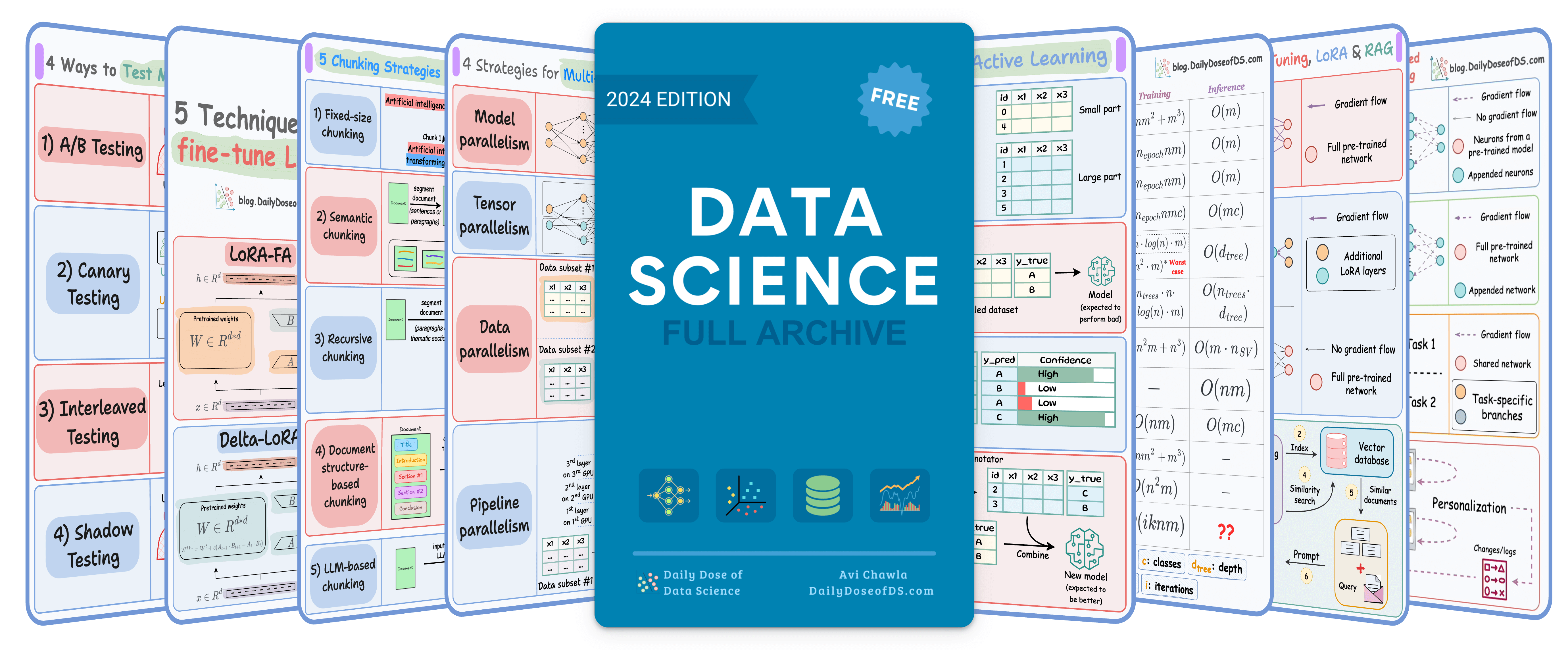

TODAY'S ISSUE
TODAY’S DAILY DOSE OF DATA SCIENCE
Build an MCP-powered RAG over Videos
Today, we are building an MCP-driven video RAG that ingests a video and lets you chat with it.
It also fetches the exact video chunk where an event occurred.
Our tech stack:
- Ragie for video ingestion and retrieval.
- Cursor as the MCP host.
Here's the workflow:
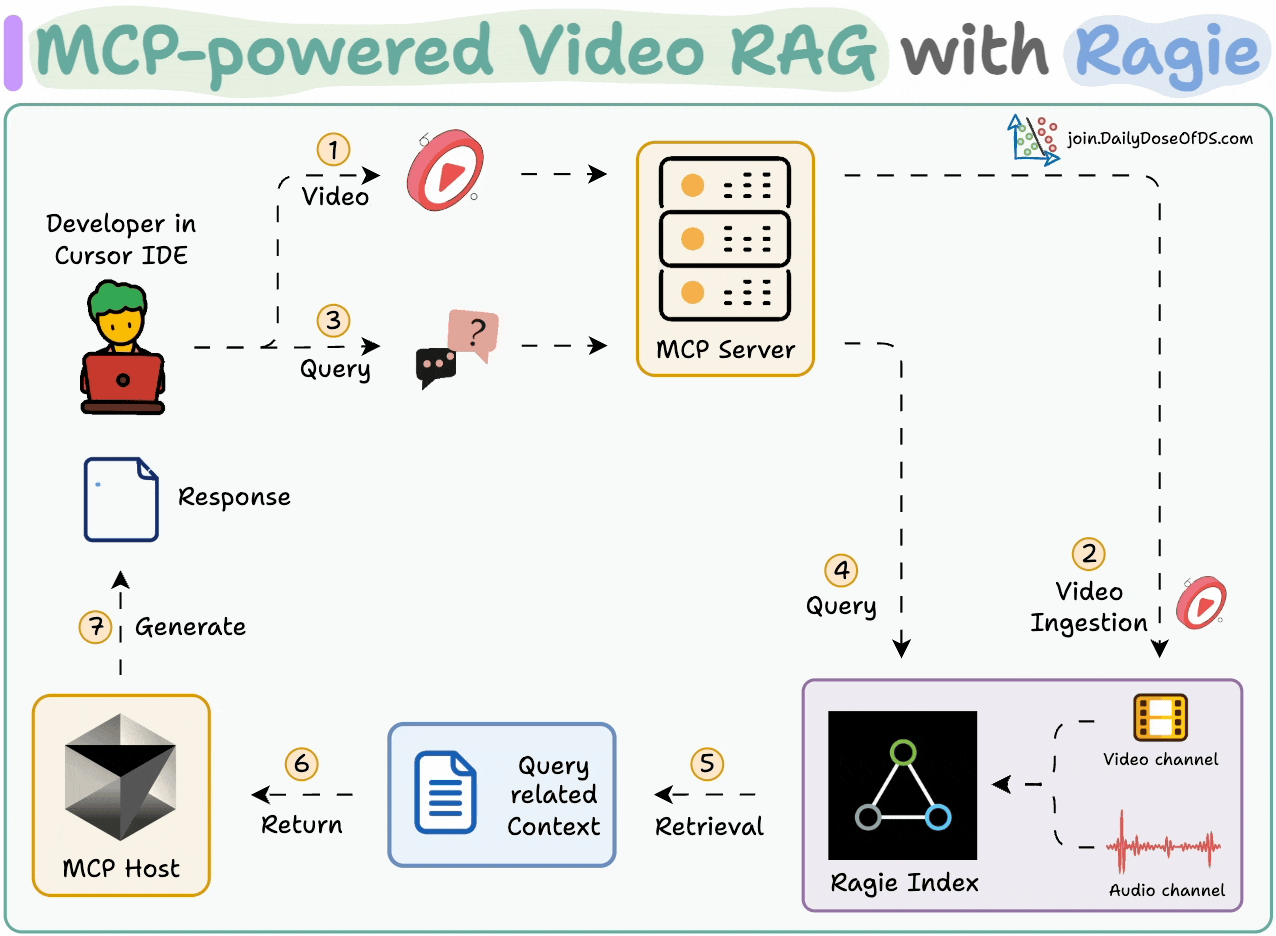
- User specifies video files and a query.
- An Ingestion tool indexes the videos in Ragie.
- A Query tool retrieves info from Ragie Index with citations.
- A show-video tool returns the video chunk that answers the query.
Here's the MCP-powered video rag in action:
Implementation details
MCP-powered RAG over videos
Let's implement this (the code is linked later in the issue)!
Ingest data
We implement a method to ingest video files into the Ragie index.
We also specify the audio-video mode to load both audio and video channels during ingestion.

Retrieve data
We retrieve the relevant chunks from the video based on the user query.
Each chunk has a start time, an end time, and a few more details that correspond to the video segment.

Create MCP Server
We integrate our RAG pipeline into an MCP server with 3 tools:
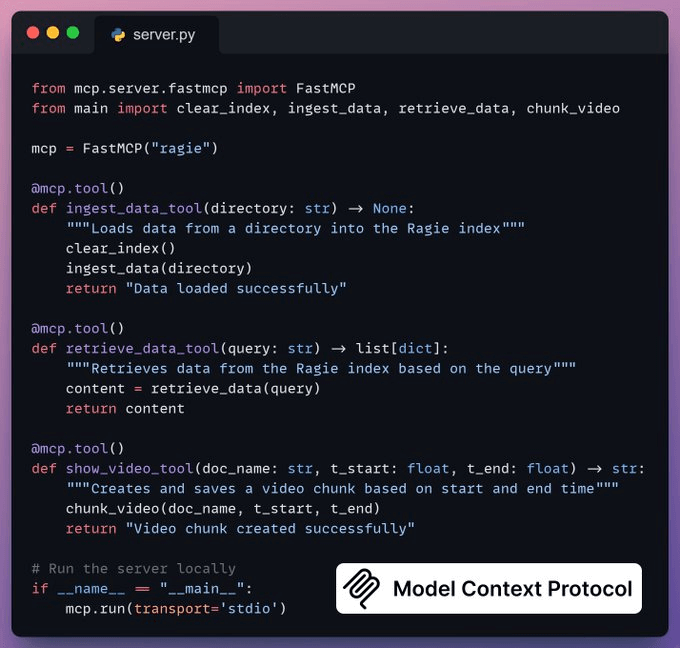
ingest_data_tool: Ingests data into Ragie index.retrieve_data_tool: Retrieves data based on the user query.show_video_tool: Creates video chunks from the original video.
Integrate MCP server with Cursor
To integrate the MCP server with Cursor, go to Settings → MCP → Add new global MCP server.
In the JSON file, add what's shown below:
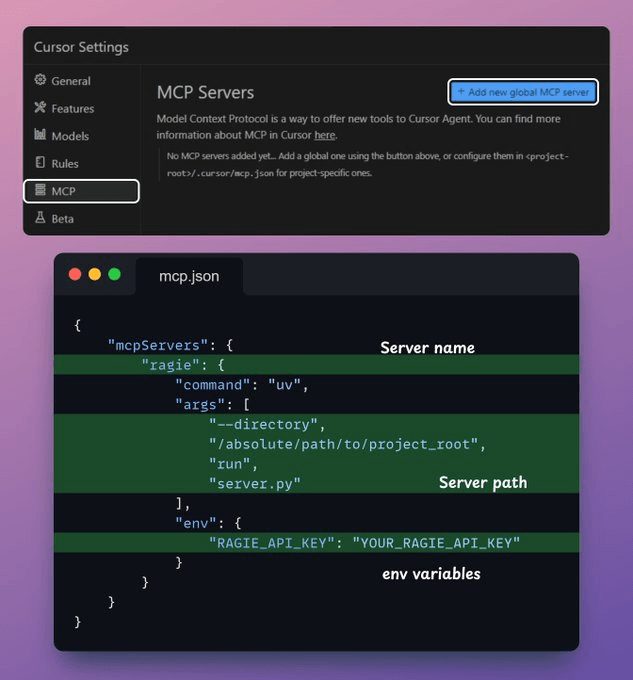
Done!
Your local Ragie MCP server is live and connected to Cursor!
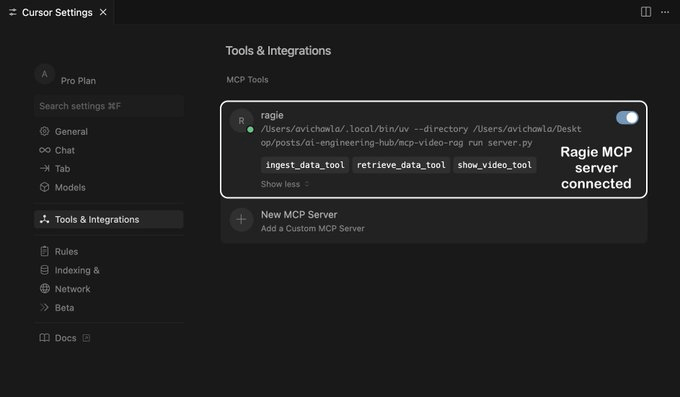
Next, we interact with the MCP server through Cursor.
Based on the query, it can:
- Fetch detailed information about an existing video.
- Retrieve the video segment where a specific event occurred.
By integrating audio and video context into RAG, devs can build powerful multimedia and multimodal GenAI apps.
Find the code in this GitHub repo →
Thanks for reading!
Zero to Hero
The full MCP blueprint
After doing the crash course series on RAG and AI Agents, we started another one on MCP, which is both foundational and implementation-heavy, walking you through everything step-by-step.
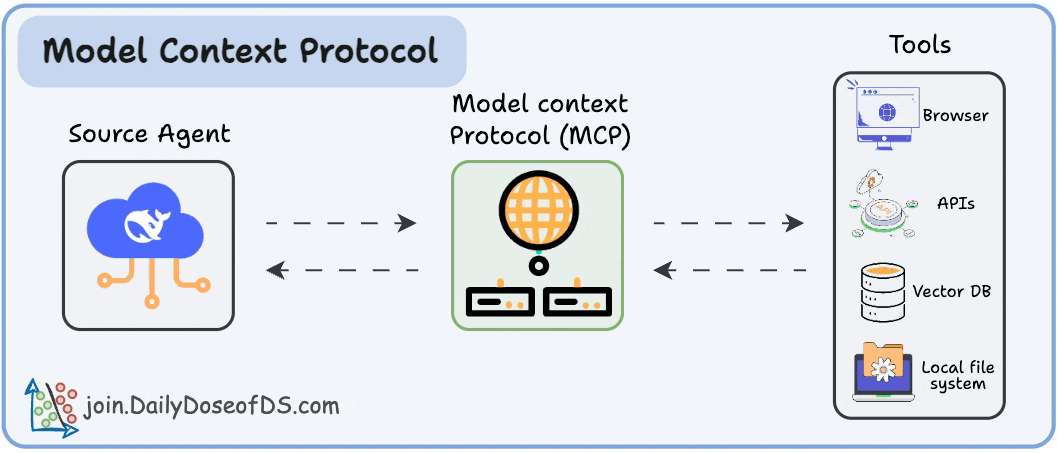
In Part 1, we introduce:
- Why context management matters in LLMs.
- The limitations of prompting, chaining, and function calling.
- The M×N problem in tool integrations..
- And how MCP solves it through a structured Host–Client–Server model.
In Part 2, we go hands-on and cover:
- The core capabilities in MCP (Tools, Resources, Prompts).
- How JSON-RPC powers communication.
- Transport mechanisms (Stdio, HTTP + SSE).
- A complete, working MCP server with Claude and Cursor.
- Comparison between function calling and MCPs.
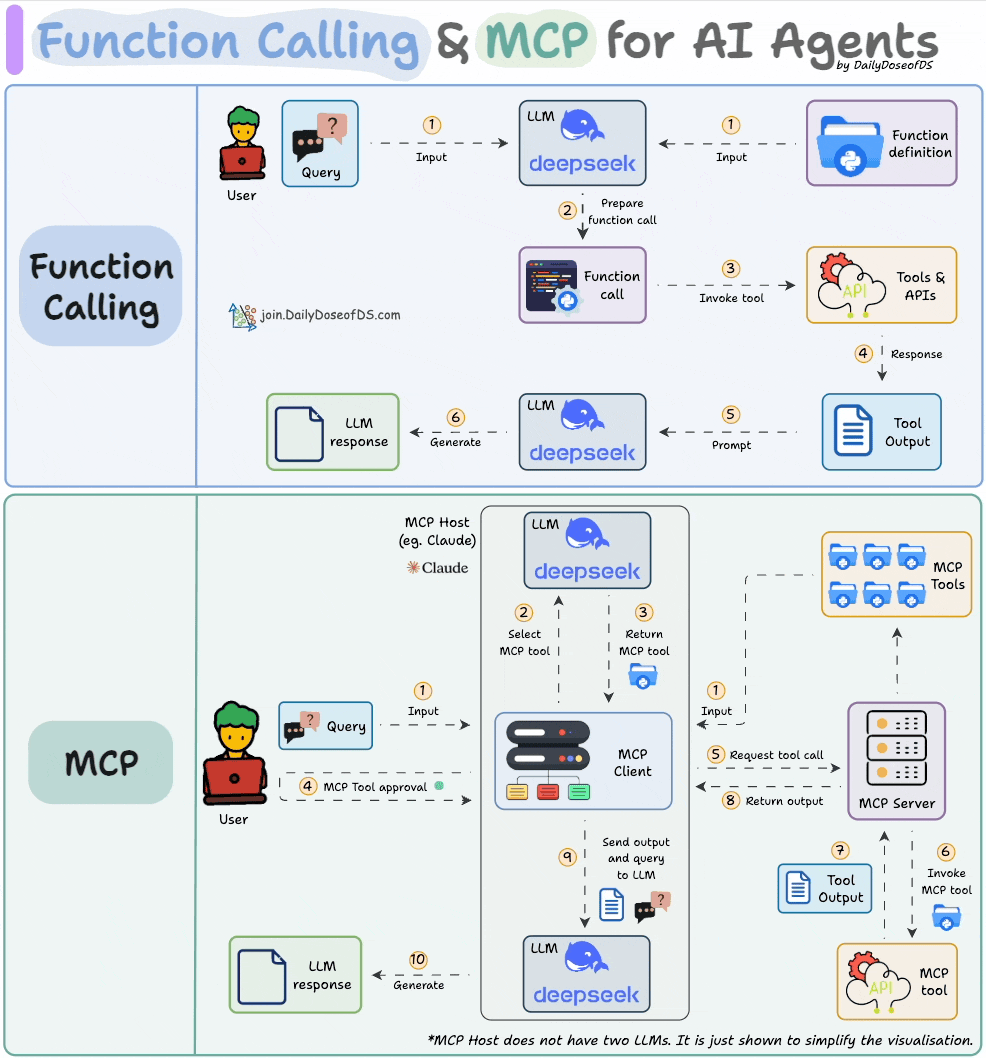
In Part 3, we built a fully custom MCP client from scratch:
- How to build a custom MCP client and not rely on prebuilt solutions like Cursor or Claude.
- What the full MCP lifecycle looks like in action.
- The true nature of MCP as a client-server architecture, as revealed through practical integration.
- How MCP differs from traditional API and function calling, illustrated through hands-on implementations.
In Part 4, we built a full-fledged MCP workflow using tools, resources, and prompts.
- What exactly are resources and prompts in MCP?
- Implementing resources and prompts server-side.
- How tools, resources, and prompts differ from each other.
- Using resources and prompts inside the Claude Desktop.
- A full-fledged real-world use case powered by coordination across tools, prompts, and resources.
In part 5, we explained the process of integrating Sampling into MCP workflows.
- What is sampling, and why is it useful?
- Sampling support in FastMCP
- How does it work on the server side?
- How to write a sampling handler on the client side?
- Model preferences
- Use cases for sampling
- Error handling and some best practices
This protocol is already powering real-world agentic systems.
And in this crash course, you’ll learn exactly how to implement and extend it, from first principles to production use.
Read the first five parts here:
THAT'S A WRAP
No-Fluff Industry ML resources to
Succeed in DS/ML roles

At the end of the day, all businesses care about impact. That’s it!
- Can you reduce costs?
- Drive revenue?
- Can you scale ML models?
- Predict trends before they happen?
We have discussed several other topics (with implementations) in the past that align with such topics.
Here are some of them:
- Learn sophisticated graph architectures and how to train them on graph data in this crash course.
- So many real-world NLP systems rely on pairwise context scoring. Learn scalable approaches here.
- Run large models on small devices using Quantization techniques.
- Learn how to generate prediction intervals or sets with strong statistical guarantees for increasing trust using Conformal Predictions.
- Learn how to identify causal relationships and answer business questions using causal inference in this crash course.
- Learn how to scale and implement ML model training in this practical guide.
- Learn 5 techniques with implementation to reliably test ML models in production.
- Learn how to build and implement privacy-first ML systems using Federated Learning.
- Learn 6 techniques with implementation to compress ML models.
All these resources will help you cultivate key skills that businesses and companies care about the most.
SPONSOR US
Advertise to 600k+ data professionals
Our newsletter puts your products and services directly in front of an audience that matters — thousands of leaders, senior data scientists, machine learning engineers, data analysts, etc., around the world.






